World Roundup
May/June 2017


-
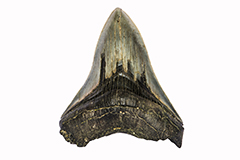 MEXICO: Maya communities living in the interior of the Yucatán Peninsula were evidently aware of the great marine predators swimming at the outskirts of their jungle world. A new study has examined the strong influence sharks had on Maya art, iconography, and daily life. Shark teeth have been found at many inland Maya sites, including fossilized examples from extinct megalodons. The teeth, which were acquired through trade, were used in ritual ceremonies, as votive offerings, or as personal adornments. —Jason Urbanus
MEXICO: Maya communities living in the interior of the Yucatán Peninsula were evidently aware of the great marine predators swimming at the outskirts of their jungle world. A new study has examined the strong influence sharks had on Maya art, iconography, and daily life. Shark teeth have been found at many inland Maya sites, including fossilized examples from extinct megalodons. The teeth, which were acquired through trade, were used in ritual ceremonies, as votive offerings, or as personal adornments. —Jason Urbanus -
 CHILE: The Atacama Desert, which stretches 600 miles along South America’s west coast, is one of the driest locations on Earth. It had previously been thought that the desert’s uninhabitable conditions created a barrier to the movements of the earliest human settlers. However, recent research has detected evidence of freshwater plants and animals buried deep beneath the arid surface. This suggests that between 9,000 and 25,000 years ago, the Atacama may have contained wetlands that could have sustained and even aided early human colonization. —Jason Urbanus
CHILE: The Atacama Desert, which stretches 600 miles along South America’s west coast, is one of the driest locations on Earth. It had previously been thought that the desert’s uninhabitable conditions created a barrier to the movements of the earliest human settlers. However, recent research has detected evidence of freshwater plants and animals buried deep beneath the arid surface. This suggests that between 9,000 and 25,000 years ago, the Atacama may have contained wetlands that could have sustained and even aided early human colonization. —Jason Urbanus -
 ENGLAND: A Roman skeleton that was first discovered near Stanwick, Northamptonshire in 1991, only recently disclosed its gruesome details. Analysis of the 25- to 35-year-old man, who died in the 3rd or 4th century A.D., reveals that his tongue had been cut out, causing an oral infection and abnormal bone growth around the skull. A flat rock was inserted into the mouth during burial, perhaps as a symbolic replacement in death for what he had lost in life. —Jason Urbanus
ENGLAND: A Roman skeleton that was first discovered near Stanwick, Northamptonshire in 1991, only recently disclosed its gruesome details. Analysis of the 25- to 35-year-old man, who died in the 3rd or 4th century A.D., reveals that his tongue had been cut out, causing an oral infection and abnormal bone growth around the skull. A flat rock was inserted into the mouth during burial, perhaps as a symbolic replacement in death for what he had lost in life. —Jason Urbanus -
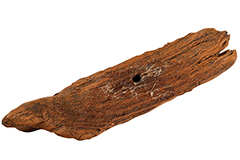 NORWAY: Archaeologists excavating a medieval farm in Ørland came upon a child’s toy boat buried at the bottom of an ancient well. The wooden plaything, which was carved to resemble a Viking ship, had a hole into which a small mast would have been inserted. The object was thrown into the well when it was abandoned and filled around 1,000 years ago. Another well nearby contained four discarded leather shoes. —Jason Urbanus
NORWAY: Archaeologists excavating a medieval farm in Ørland came upon a child’s toy boat buried at the bottom of an ancient well. The wooden plaything, which was carved to resemble a Viking ship, had a hole into which a small mast would have been inserted. The object was thrown into the well when it was abandoned and filled around 1,000 years ago. Another well nearby contained four discarded leather shoes. —Jason Urbanus -
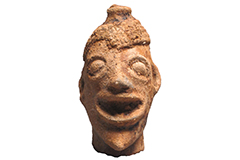 GHANA: Hundreds of terracotta figurines unearthed in Koma Land were likely used during ritual ceremonies between the 6th and 14th centuries. Many of the animal and human statuettes contain recesses near their heads that once held small amounts of liquid. DNA and biological analysis of these cavities identified remnants of exotic plants such as banana and pine, which had been mixed into ceremonial libations. Little is known about the people who produced these artifacts, as they abandoned the area in precolonial times. —Jason Urbanus
GHANA: Hundreds of terracotta figurines unearthed in Koma Land were likely used during ritual ceremonies between the 6th and 14th centuries. Many of the animal and human statuettes contain recesses near their heads that once held small amounts of liquid. DNA and biological analysis of these cavities identified remnants of exotic plants such as banana and pine, which had been mixed into ceremonial libations. Little is known about the people who produced these artifacts, as they abandoned the area in precolonial times. —Jason Urbanus -
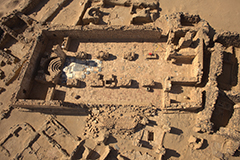 SUDAN: Excavations at the Christian monastery of al-Ghazali in northern Sudan point to a highly organized monastic community. The 7th- or 8th-century complex comprises two churches, dormitories, refectories, and food production areas. It’s two bathroom facilities, which have 33 toilets, are the only ones ever found in the area of ancient Nubia. Given its size, experts believe the monastery was founded by King Mercurios, who was known as a “New Constantine” for his pivotal role in the development of Nubian Christianity. —Jason Urbanus
SUDAN: Excavations at the Christian monastery of al-Ghazali in northern Sudan point to a highly organized monastic community. The 7th- or 8th-century complex comprises two churches, dormitories, refectories, and food production areas. It’s two bathroom facilities, which have 33 toilets, are the only ones ever found in the area of ancient Nubia. Given its size, experts believe the monastery was founded by King Mercurios, who was known as a “New Constantine” for his pivotal role in the development of Nubian Christianity. —Jason Urbanus -
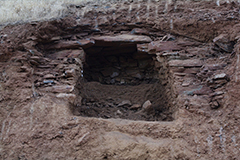 IRAQ: A tomb in northern Iraq, first exposed by construction workers in 2013, concealed the remains of at least six individuals. Along with dozens of ceramic vessels, a bracelet decorated with snake heads was found among the burials and helps date the tomb to the end of the Achaemenid Empire, about 2,400 years ago. Sometime later, between 400 and 1,300 years ago, the tomb was reused—five more people were buried on top of the ancient skeletons. —Jason Urbanus
IRAQ: A tomb in northern Iraq, first exposed by construction workers in 2013, concealed the remains of at least six individuals. Along with dozens of ceramic vessels, a bracelet decorated with snake heads was found among the burials and helps date the tomb to the end of the Achaemenid Empire, about 2,400 years ago. Sometime later, between 400 and 1,300 years ago, the tomb was reused—five more people were buried on top of the ancient skeletons. —Jason Urbanus -
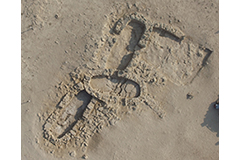 UNITED ARAB EMIRATES: The discovery of a rare stone house on Marawah Island off the coast of Abu Dhabi has provided a remarkable glimpse at what life was like in the Persian Gulf around 7,500 years ago. The three-room building is the best example of Neolithic architecture ever uncovered in the region. Hundreds of artifacts, as well as animal remains, suggest that the inhabitants herded sheep and goats, but also relied heavily on marine resources for trade and sustenance. —Jason Urbanus
UNITED ARAB EMIRATES: The discovery of a rare stone house on Marawah Island off the coast of Abu Dhabi has provided a remarkable glimpse at what life was like in the Persian Gulf around 7,500 years ago. The three-room building is the best example of Neolithic architecture ever uncovered in the region. Hundreds of artifacts, as well as animal remains, suggest that the inhabitants herded sheep and goats, but also relied heavily on marine resources for trade and sustenance. —Jason Urbanus -
 CHINA: The Neolithic site of Jiahu, where the oldest playable musical instrument was previously found, has now produced evidence of the oldest silk fibers in human history. Soil samples taken from beneath skeletons in two tombs that date back 8,500 years reveal traces of silk proteins, indicating that the deceased may have been dressed in silk garments when they were buried. This new evidence pushes back the first known silk production technology by nearly 3,500 years. —Jason Urbanus
CHINA: The Neolithic site of Jiahu, where the oldest playable musical instrument was previously found, has now produced evidence of the oldest silk fibers in human history. Soil samples taken from beneath skeletons in two tombs that date back 8,500 years reveal traces of silk proteins, indicating that the deceased may have been dressed in silk garments when they were buried. This new evidence pushes back the first known silk production technology by nearly 3,500 years. —Jason Urbanus -
 INDIA: Experts are searching for more evidence of missing American World War II soldiers in the northeastern state of Arunachal Pradesh after human remains were recently recovered near the wreckage of a plane. As many as 400 soldiers are still considered lost in the region, as American planes occasionally crashed in the Himalayas during supply runs to China. Some of the wreck sites are located as high as 10,000 feet above sea level. —Jason Urbanus
INDIA: Experts are searching for more evidence of missing American World War II soldiers in the northeastern state of Arunachal Pradesh after human remains were recently recovered near the wreckage of a plane. As many as 400 soldiers are still considered lost in the region, as American planes occasionally crashed in the Himalayas during supply runs to China. Some of the wreck sites are located as high as 10,000 feet above sea level. —Jason Urbanus
Advertisement
IN THIS ISSUE
Features
The Wall at the End of the Empire
The Blackener’s Cave
After the Battle
Letter from Greenland
From the Trenches
Scroll Search
Off the Grid
A Cornucopia of Condiments
Bronze Age Bling
Squeezing History from a Turnip
Aurignacian School of Art
Common Ground
Standing Still in Beringia?
The Vikings’ Wide Reach
Close Quarters
The Third Reich’s Arctic Outpost
The Buddha of the Lake
World Roundup
Maya land sharks, exotic libations in Ghana, Viking toy ship, Abu Dhabi’s Neolithic building boom, and the world’s oldest silk
Artifact
How the Maya kings made it rain
Advertisement

Recent Issues
-
 May/June 2024
May/June 2024
-
 March/April 2024
March/April 2024
-
 January/February 2024
January/February 2024
-
 November/December 2023
November/December 2023
-
 September/October 2023
September/October 2023
-
 July/August 2023
July/August 2023
-
 May/June 2023
May/June 2023
-
 March/April 2023
March/April 2023
-
 January/February 2023
January/February 2023
-
 November/December 2022
November/December 2022
-
 September/October 2022
September/October 2022
-
 July/August 2022
July/August 2022
-
 May/June 2022
May/June 2022
-
 March/April 2022
March/April 2022
-
 January/February 2022
January/February 2022
-
 November/December 2021
November/December 2021
-
 September/October 2021
September/October 2021
-
 July/August 2021
July/August 2021
-
 May/June 2021
May/June 2021
-
 March/April 2021
March/April 2021
-
 January/February 2021
January/February 2021
-
 November/December 2020
November/December 2020
-
 September/October 2020
September/October 2020
-
 July/August 2020
July/August 2020
-
 May/June 2020
May/June 2020
-
 March/April 2020
March/April 2020
-
 January/February 2020
January/February 2020
-
 November/December 2019
November/December 2019
-
 September/October 2019
September/October 2019
-
 July/August 2019
July/August 2019
-
 May/June 2019
May/June 2019
-
 March/April 2019
March/April 2019
-
 January/February 2019
January/February 2019
-
 November/December 2018
November/December 2018
-
 September/October 2018
September/October 2018
-
 July/August 2018
July/August 2018
-
 May/June 2018
May/June 2018
-
 March/April 2018
March/April 2018
-
 January/February 2018
January/February 2018
-
 November/December 2017
November/December 2017
-
 September/October 2017
September/October 2017
-
 July/August 2017
July/August 2017
-
 May/June 2017
May/June 2017
-
 March/April 2017
March/April 2017
-
 January/February 2017
January/February 2017
-
 November/December 2016
November/December 2016
-
 September/October 2016
September/October 2016
-
 July/August 2016
July/August 2016
-
 May/June 2016
May/June 2016
-
 March/April 2016
March/April 2016
-
 January/February 2016
January/February 2016
-
 November/December 2015
November/December 2015
-
 September/October 2015
September/October 2015
-
 July/August 2015
July/August 2015
-
 May/June 2015
May/June 2015
-
 March/April 2015
March/April 2015
-
 January/February 2015
January/February 2015
-
 November/December 2014
November/December 2014
-
 September/October 2014
September/October 2014
-
 July/August 2014
July/August 2014
-
 May/June 2014
May/June 2014
-
 March/April 2014
March/April 2014
-
 January/February 2014
January/February 2014
-
 November/December 2013
November/December 2013
-
 September/October 2013
September/October 2013
-
 July/August 2013
July/August 2013
-
 May/June 2013
May/June 2013
-
 March/April 2013
March/April 2013
-
 January/February 2013
January/February 2013
-
 November/December 2012
November/December 2012
-
 Sep/Oct 2012
Sep/Oct 2012
-
 September/October 2012
September/October 2012
-
 July/August 2012
July/August 2012
-
 May/June 2012
May/June 2012
-
 March/April 2012
March/April 2012
-
 January/February 2012
January/February 2012
-
 November/December 2011
November/December 2011
-
 September/October 2011
September/October 2011
-
 July/August 2011
July/August 2011
-
 May/June 2011
May/June 2011
-
 March/April 2011
March/April 2011
-
 January/February 2011
January/February 2011
Advertisement






